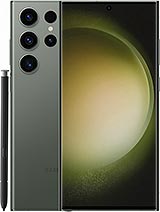Cell Phones and Increased Risk of Brain Tumors Is There a Connection?
Does cell phone use have anything to do with an increased risk of developing brain tumors? The issue has been debated for years and it appears the latest study has done little to settle the matter.
It was only last year that a “new†long-term study by the British Institute of Cancer Research reported that there is still no credible evidence that cell phones cause brain tumors.
Researchers considered studies from Britain, Denmark, Finland, Norway, and Sweden, countries which were some of the first to have cell phones, and evaluated the possible health impact of cell phone use over the last decade.
The study, which was published in the British Journal of Cancer, considered the risk of acoustic neuroma, or benign tumors that grow in the nerve connecting the ear and inner ear to the brain. This nerve is near to where cell phones are held against the head.
Anthony Swerdlow of the British Institute said that results showed “no substantial risk in the first decade after starting use.” Those scientists and others, however, concede that risks over a longer time period cannot be ruled out.
While there is a possibility cell phones can cause other kinds of brain tumors, scientists believe acoustic neuroma would be the most likely. No study has actually demonstrated that cell phone use poses a significant health hazard.
Although mobile phone manufacturers claim there is no substantial evidence that cell phone radiation causes harm, other studies have suggested radiation may have some adverse effects on the human body. These include the heating up of the brain and causing headaches and nausea.
It must be remembered that cell “phones†are not really telephones at all; they are radio transmitters and receivers.
A traditional telephone converts sound waves into electrical energy that is then carried by means of a network of wires, fiber optic cables, or transmitters to a receiver that converts the electrical energy back into sound. No electromagnetic radiation is generated in the actual headset that users hold next to their ear.
Cell (or mobile) phones, however, immediately convert sound into electromagnetic radiation (radio waves) in order to send the call to the nearest commercial transmitter (cell site) where it is boosted in strength for transmission to the person receiving the call. On that end, the electromagnetic waves are converted back into sound waves.
Thus, on both ends of the call (assuming the receiver is also a cell phone) the customer’s head is in close proximity to the transmission or reception of electromagnetic radiation. That fact alone suggests that hands-free devices, which place the cell phone away from the head, are better options if an individual makes extensive use of cell phone.
As with any other exposure-related risk, the extent of the exposure (daily average) and the duration (years of exposure) are variables that will affect the ultimate result. Clearly, using a cell phone for only a few minutes a day on an intermittent basis should be significantly less of a risk than using the device for hours at a time on a daily basis for many years.
It may also be years before any serious long-term negative health effects of cell phone use become manifest in the general population. If other cancers related to exposure to toxins such as cigarette smoke and asbestos are any indication, it may be decades before this health issue is definitively resolved one way or the other.
In the last decade cell phone use has increased dramatically worldwide. About 780 million mobile phones were expected to be sold in 2005 and almost 2 billion people now use cell phones around the world.
The latest study, which is published in the International Archives of Occupational and Environmental Health, was conducted in Sweden. It suggests that people who use a cell phone for at least one hour a day over the course of many years are some 240% (about 2 ½ times) more likely to develop a brain tumor than a non-user.
Tumors were found to be located on the side of the head where the cell phone was positioned during use.
The study considered 1,810 people (ages 20-80) divided equally between those with a malignant brain tumor (905) and a healthy control group (905).
In the group with malignancies, 85 of the 905 subjects turned out to be people who had used cell phones extensively (about one hour each day) for many years. The researchers defined extensive use as being a total of over 2,000 hours over a period of several years.
Research & Studies
Making Information and Communication Technology (ICT) a central part of efforts to decrease CO₂ (Carbon Dioxide) output has the potential to reduce..
Research & Studies
New research from Ericsson (NASDAQ:ERIC) has suggested that mobile penetration is outpacing births rates across the Middle East. According to the..
Research & Studies
Thanks to mobile broadband, an ever-increasing number of people and devices are connected. This phenomenon provides more opportunities for operators,..

 Vodafone Oman
Vodafone Oman Emirates Telecom
Emirates Telecom  Ooredoo Om
Ooredoo Om Ooredoo Qa
Ooredoo Qa stc Bahrain
stc Bahrain Orange Egypt
Orange Egypt Mobily
Mobily Zain Jo
Zain Jo omantel
omantel STC
STC Emirates Du
Emirates Du Asiacell
Asiacell Etisalat Egypt
Etisalat Egypt  Telecom Egypt
Telecom Egypt jawwal
jawwal Orange Jo
Orange Jo Umniah
Umniah Zain Sa
Zain Sa Bahrain Batelco
Bahrain Batelco Zain Bh
Zain Bh Wataniya palestine
Wataniya palestine Kuwait Viva
Kuwait Viva  Zain Kw
Zain Kw Vodafone Qa
Vodafone Qa MTN Syria
MTN Syria Syriatel
Syriatel Sabafon
Sabafon Zain Iq
Zain Iq MTN Yemen
MTN Yemen Ooredoo Kw
Ooredoo Kw Vodafone Egypt
Vodafone Egypt  Samatel
Samatel Huawei
Huawei Samsung
Samsung MOTOROLA
MOTOROLA Alcatel
Alcatel Lenovo
Lenovo LG
LG Nokia
Nokia Sony Ericsson
Sony Ericsson HTC
HTC BlackBerry
BlackBerry Siemens
Siemens Acer
Acer Sony
Sony Asus
Asus VK
VK APPLE
APPLE BenQ-Siemens
BenQ-Siemens Sagem
Sagem Eten
Eten HP
HP Panasonic
Panasonic Amoi
Amoi Toshiba
Toshiba Sharp
Sharp Sonim
Sonim Bird
Bird Mitac
Mitac Philips
Philips Vertu
Vertu Pantech
Pantech Micromax
Micromax Maxon
Maxon Haier
Haier I-mate
I-mate Gigabyte
Gigabyte I-mobile
I-mobile Kyocera
Kyocera BenQ
BenQ Microsoft
Microsoft Telit
Telit Connect
Connect Sendo
Sendo SEWON
SEWON Mitsubishi
Mitsubishi DELL
DELL NEC
NEC Thuraya
Thuraya Neonode
Neonode Qtek
Qtek Be
Be Bosch
Bosch Palm
Palm MWG
MWG XCute
XCute Fujitsu Siemens
Fujitsu Siemens WND
WND INQ
INQ O2
O2 Innostream
Innostream Benefon
Benefon Google
Google


















